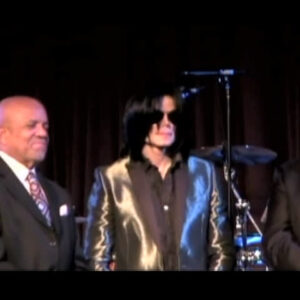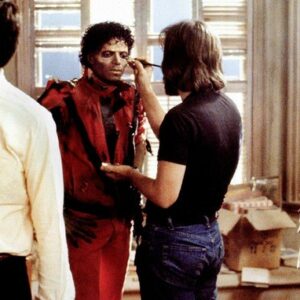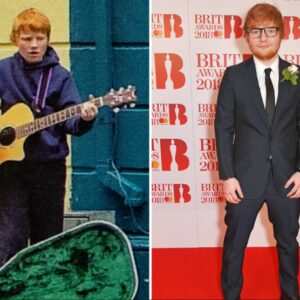In the world of music, few artists possess the ability to move seamlessly between genres and mediums like Mary J. Blige. Since the early 1990s, Blige has captivated audiences with her raw, emotive voice, blending hip-hop, R&B, and soul in ways that felt both innovative and familiar. Yet, beyond her unmistakable sound, she has also established herself as a force to be reckoned with in visual storytelling. Mary J. Blige’s music videos aren’t just backdrops for her songs; they are emotional epics that reveal her truths and, in doing so, reflect the truths of her audience.
Blige has often been described as the “Queen of Hip-Hop Soul,” a moniker that underscores her musical genius. But her artistic mastery extends far beyond the confines of a studio. With each music video, Blige invites us into a cinematic universe where the lines between personal struggle and public performance blur. Her stories are about resilience, love, heartache, and triumph—and they’ve redefined how we think about visual narratives in music. Through her videos, Blige has crafted a legacy of empowerment, authenticity, and social commentary, one that has left an indelible mark on the music industry.
Authenticity in Storytelling
At the heart of Mary J. Blige’s music videos is her unwavering commitment to authenticity. There’s an undeniable honesty to her work, and it’s this raw emotion that has allowed her to connect with millions of people. Whether she’s grappling with the depths of heartbreak or celebrating moments of empowerment, Blige’s videos are visceral, often capturing the inner turmoil of someone caught between vulnerability and strength.
In the video for her 1996 hit “Not Gon’ Cry,” Blige’s portrayal of a woman scorned mirrors the emotional weight of the song. Set against a minimalist backdrop, Blige’s tears and anger become the focal point, drawing viewers into her pain. The video feels personal, as though Blige is reliving every word of the song in real-time. This emotional transparency is what sets her apart—Blige isn’t performing for an audience; she’s offering a piece of herself.
For many artists, music videos are a commercial tool, a way to market their brand or song. But for Blige, they’ve always been more than that. They are cathartic experiences where the music and visuals meld into something deeper. Each frame tells a story that’s as personal as it is universal, and that’s why her fans—many of whom have lived through similar struggles—find solace in her work.
Addressing Social and Cultural Issues
While Blige’s videos often feel intensely personal, they also engage with broader societal issues, particularly those affecting women of color. Blige has never shied away from exploring difficult topics—whether it’s mental health, addiction, or systemic racism. Her ability to intertwine these themes into her visual storytelling has allowed her to create work that resonates on a cultural level, as much as it does on a personal one.
Take, for instance, her video for “No More Drama.” Released in 2001, the song was already an anthem for those trying to break free from toxic situations. The video, however, elevated it to a different level. Featuring scenes of domestic violence, addiction, and self-destruction, Blige’s visual interpretation of the song was stark, painful, and real. The narrative isn’t sugar-coated, and the images are confronting. But it’s in this unflinching honesty that Blige finds redemption. She doesn’t present herself as a victim or a hero—she is simply a survivor. The final moments of the video, where Blige throws off the emotional shackles that have weighed her down, are nothing short of triumphant.
Similarly, in her video for “Be Without You,” Blige tackles themes of commitment and trust in romantic relationships. The video portrays a couple navigating the complexities of love and the challenges that come with it. But beneath the surface, it also speaks to deeper societal issues, such as the difficulty Black women face in finding stable, loving partnerships in a world that too often marginalizes them. Blige’s portrayal of strength through vulnerability provides a template for her viewers—especially women of color—who see their own lives reflected in her work.
Evolution of Style and Imagery
As an artist, Blige has never been one to remain stagnant. Her music has evolved over the decades, and so too have her music videos. Early in her career, her visuals were gritty, raw, and unpolished—mirroring the tough realities of her lyrics. In the video for “Real Love,” Blige is seen rocking oversized denim jackets, gold chains, and dark sunglasses, a street-smart look that was emblematic of early ’90s hip-hop. The video was simple, focused more on the performance than the aesthetics. Yet, even then, Blige’s ability to communicate raw emotion through the screen was palpable.
As her career progressed, so did her approach to visual storytelling. By the 2000s, Blige’s music videos began to take on a more cinematic quality. Collaborating with high-profile directors like Hype Williams and Benny Boom, Blige’s visuals became more polished, yet they never lost the emotional core that defined her work. In videos like “Be Without You” and “Take Me As I Am,” Blige’s style became a blend of high fashion and intimate storytelling. She shifted from the streetwear of her early days to more glamorous, designer looks, but her emotional vulnerability remained ever-present.
In the video for “Everything,” released in 1997, Blige’s wardrobe was more polished, featuring flowing gowns and elegant settings. But the shift in style did not signal a departure from her authentic self. Rather, it was a reflection of her evolution as a woman and an artist. The video is visually stunning, but beneath the glossy exterior is a narrative about self-acceptance and love. Blige’s ability to balance high fashion with raw emotion has influenced a generation of artists who seek to combine style with substance.
Empowerment Through Visual Representation
Throughout her career, Mary J. Blige has been a beacon of empowerment. Whether she’s singing about heartbreak or self-love, her music videos have consistently portrayed her as a strong, independent woman who refuses to be defined by her past. For Blige, visual representation is key to this empowerment. In many of her videos, she portrays herself as both vulnerable and powerful—a duality that resonates deeply with her fans.
In the video for “Take Me As I Am,” Blige addresses the struggle for self-acceptance. The video opens with Blige sitting in front of a mirror, gazing at her reflection. The simplicity of the scene is powerful; it’s a reminder that self-love often requires confronting one’s own insecurities. Throughout the video, Blige alternates between moments of vulnerability and strength, ultimately affirming that she deserves to be loved for who she is, flaws and all.
This theme of self-empowerment runs through many of Blige’s videos. In “Just Fine,” released in 2007, Blige delivers a message of self-confidence and resilience. The video is a celebration of life, filled with vibrant colors and infectious energy. Blige’s choreography is joyous, and her smile is radiant. It’s a stark contrast to some of her earlier, more somber videos, but the message is clear: Mary J. Blige is a woman who has found peace within herself, and she’s encouraging her fans to do the same.
A Lasting Legacy in Music Video History
Mary J. Blige’s impact on visual storytelling cannot be overstated. She has transformed the music video from a mere marketing tool into a powerful narrative device. Her ability to tell stories through song and image has not only inspired her fans but has also paved the way for other artists to follow suit. From her gritty, street-inspired early videos to her more polished, cinematic offerings, Blige has consistently pushed the boundaries of what music videos can be.
Blige’s influence can be seen in the work of many contemporary artists who have taken up the mantle of using music videos as a platform for social commentary. Her commitment to authenticity and her willingness to confront difficult issues have inspired a new generation of musicians who understand that visuals are just as important as the music itself.
Conclusion
Mary J. Blige is more than just the Queen of Hip-Hop Soul—she’s a trailblazer in visual storytelling. Her music videos are emotional journeys that have redefined how artists approach narrative in the music industry. Through her commitment to authenticity, her engagement with social issues, and her evolution as both an artist and a woman, Blige has crafted a lasting legacy that will continue to influence the world of music for years to come.
In a world where visual content often feels fleeting, Blige’s work reminds us that music videos can be powerful tools for storytelling, reflection, and change. Her impact is undeniable, and her legacy as a visual storyteller is as enduring as her music itself.





